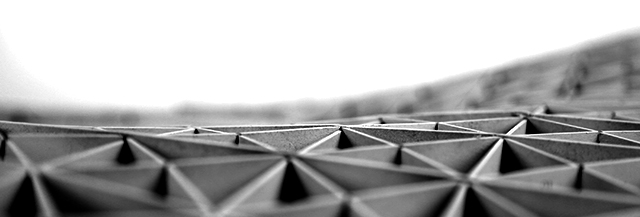
Occupy Monument
Kyle Johnson; advised by Jonathan Bachrach, Sara Dean, Etienne Turpin, and Kyle Steinfeld

The monuments that litter our cities must be held to account. Too often, they do not serve the infrastructural needs of the public, but rather serve the private interests of privilege. Too often, they do not represent the industriousness of the city's populace, but rather have come to be seen as boondoggles that benefit only the powerful. Too often, these public monuments are not in the interest of the public at all, but rather are some of the most irresponsible actors in the public sphere, contributing significantly to global climate change through inefficiencies of construction and operation.
There will come a time when the public asserts its ownership of these monuments, and corrects this misuse of resources through the means by which otherwise powerless publics have historically asserted themselves - through occupation.
This thesis speculates on the architecture of this occupation. The practical needs of these occupants are considered - from the equipment required for the appropriation to the configuration of a new form of settlement that forms over time - but so are their aesthetic and propaganda needs - from the conspicuous re-purposing of wasted resources to a new aesthetics of efficient reuse.
Uber is perhaps the poster-child for a group of what is known as economically disruptive tech companies. These companies side-step regulatory structures and offer new, more convenient goods and services that destroy industries already in place. Can this disruption be embodied architecturally? Can an architectural intervention side-step building and planning codes for personal benefit while offering something to the public?
The two chosen sites for the Field Office project - in Mexico City and Sao Paolo - are icons of those cities, but are both heavily criticized by the general public for their waste of resources and arguably unfavorable aesthetic. Given that unpopular nature of these monuments, can architectural interventions take place that comment on how these monument should be used? Can these iconic structure somehow operate in a way to more directly service the public good. As opposed to the design of office spaces, this version of the satellite project involves the design of small communities meant to serve groups of people akin to the protesters of Occupy Wall Street.
In its current state, this office is closely married to the layout of a previous project - Perfect Play. The office space layout is directly generated from an instance of game play, as each game pieces is representative of a particular piece of program. Given a layout from an instance of gameplay, this version of the field office project translates service core space to be representative of structure as well. In allowing the black pieces to be locations where structural loads may transfer to the ground, this project takes advantage of funicular form-finding techniques for the design of the interior space. In imagining and infinite field of office space, the a game- play instance may be tiled infinitely to create a edgeless funicular shell structure.
Technologies like Uber are enablers of the tailored cities, allowing for easier navigation according to an individual's own agenda. While the technology of Uber disrupts the conventional boundaries of a tourist city and redefines the visible and invisible, Uber is more disruptive economically as a tech company. It is at the fore front of Silicon Valley's band of disruptive technologies which side-step regulatory structures and capitalizes on economic opportunities. I imagine that technology companies can insert themselves into the urban fabric in a similar way. By side stepping regulatory structures of the built environment, we can imagine disruptive interventions that "break the rules" that mutually benefit tech companies and the general public.
Frank Gehry's Guggenheim Museum of Bilbao, completed in 1997, was contextually daring and controversial. This architecture performs in way that breaks the rules as an object inserted into a historic urban fabric. The museum redefined the image of the city, generating millions of dollars of revenue in tourism. While an office building may not single handedly generate new income, there is an opportunity to engage the site in a way to perhaps become a new iconic feature.
Security Interventions was a construction done in 1989 in Olso's Christiania Square. While the built work itself consists of many conceptual layers in regards to the site as a former headquarters of Nazi Germany between 1941-1945, the drawing Security Transformations is more appealing as a way of thinking about the transformative nature that a site or idea may have on an object. I begin to imagine an architecture for multiple tech companies as a stand-alone object with embedded layers and assumptions that morph in response to the external influences of a site.
This image is from Fritz Lang's 1927 film Metroplis, which presents a world in which there is a clear hierarchal social division between the pristine, beautiful towers of the upper city and the grimy conditions of the lower city. The geographic differentiation between the visible and invisible city seems to parallel a similar social divide. Disruptive interventions can intensify and highlight this divide in some cases, while in others this same imagery can be reversed in order to contribute to a mutually beneficial relationship between tech companies and the public.
Battery Crosby was a reinforced concrete battery built in 1900 and decommissioned in 1943 during World War II. As a defensive strategy, the battery is sited in such a way that it is visible only from one side. The battery also performs as part of a defensive regulatory network that spans along the western edge of the Peninsula. A similar network is com- posed of a series of interventions at the edges of the invisible city, stationed at high points to look over the visible city. Where appropriate, the disruptive interventions take on similar siting strategies of one sided visibility.
Ivana Basic's Human Blinders is a clothing accessory that discusses gaze as a political apparatus and examines its impact on the construction of the hierarchical reality based on paranoiac knowledge. Architecture could work internally in the same way, defining the external gaze of the surrounding context. If a piece of architecture can define the boundaries of a view, perhaps it can intensify oligarchical hierarchies.

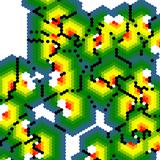
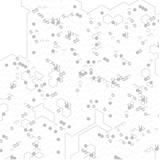










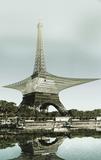
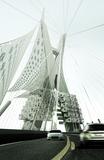
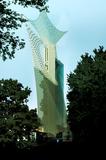
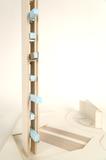
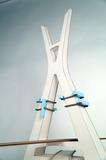
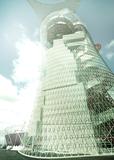
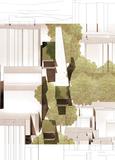
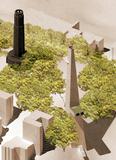
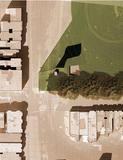
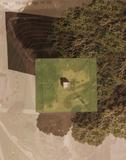
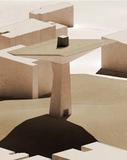
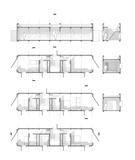
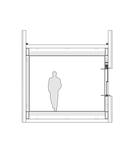
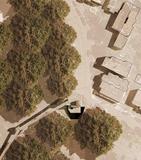
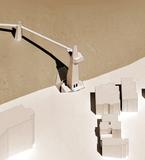
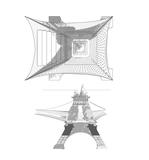
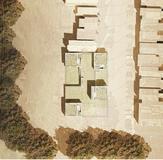
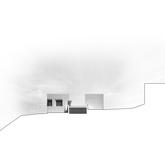
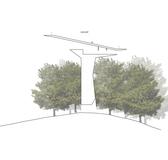
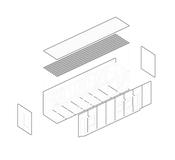
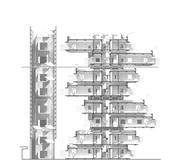
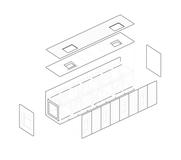
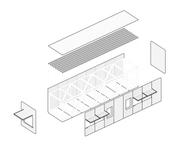
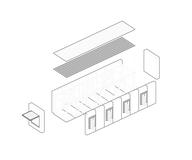
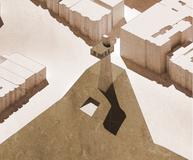







There's more!
Some other projects from this same class have been posted, as well as some interesting student work from this same year.